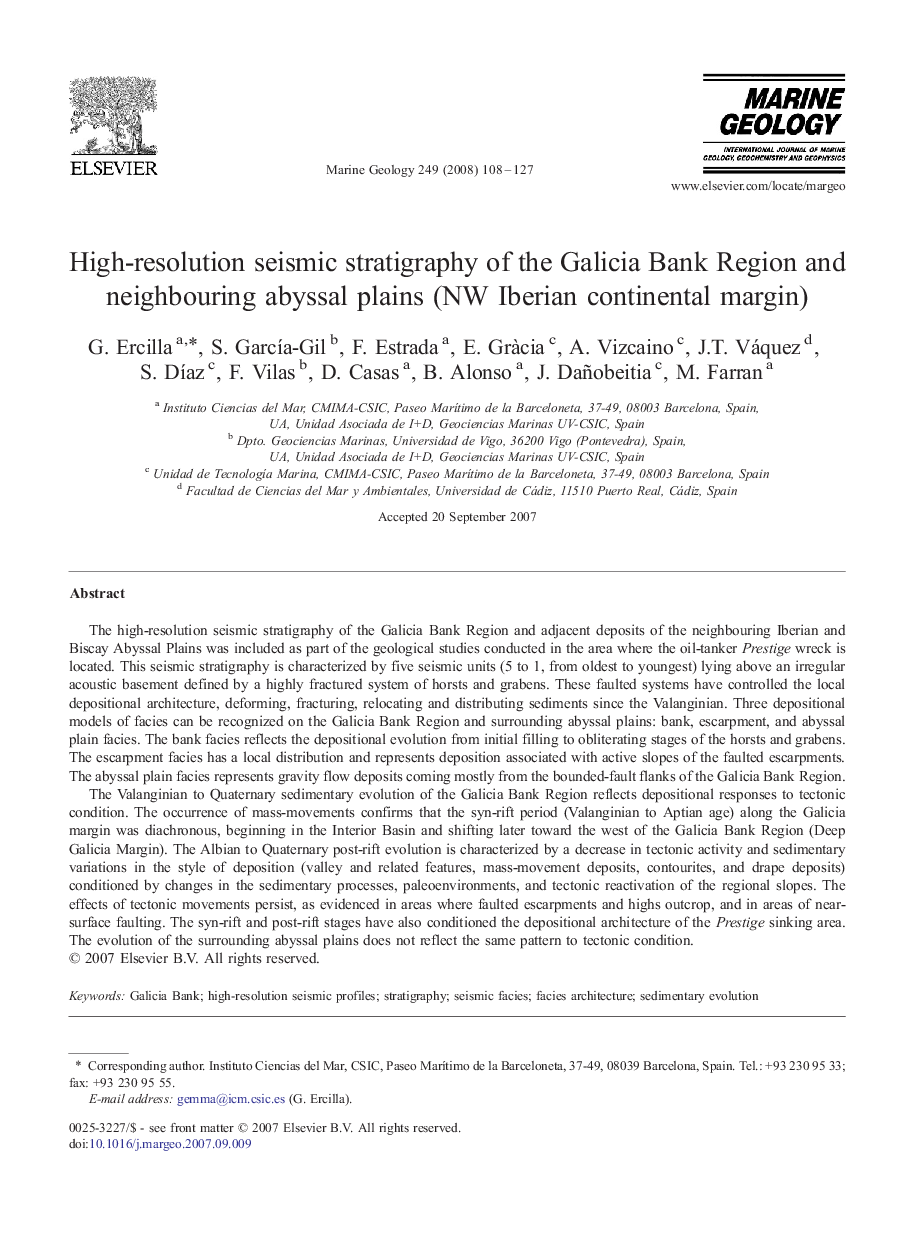| کد مقاله | کد نشریه | سال انتشار | مقاله انگلیسی | نسخه تمام متن |
|---|---|---|---|---|
| 4719328 | 1639184 | 2008 | 20 صفحه PDF | دانلود رایگان |

The high-resolution seismic stratigraphy of the Galicia Bank Region and adjacent deposits of the neighbouring Iberian and Biscay Abyssal Plains was included as part of the geological studies conducted in the area where the oil-tanker Prestige wreck is located. This seismic stratigraphy is characterized by five seismic units (5 to 1, from oldest to youngest) lying above an irregular acoustic basement defined by a highly fractured system of horsts and grabens. These faulted systems have controlled the local depositional architecture, deforming, fracturing, relocating and distributing sediments since the Valanginian. Three depositional models of facies can be recognized on the Galicia Bank Region and surrounding abyssal plains: bank, escarpment, and abyssal plain facies. The bank facies reflects the depositional evolution from initial filling to obliterating stages of the horsts and grabens. The escarpment facies has a local distribution and represents deposition associated with active slopes of the faulted escarpments. The abyssal plain facies represents gravity flow deposits coming mostly from the bounded-fault flanks of the Galicia Bank Region.The Valanginian to Quaternary sedimentary evolution of the Galicia Bank Region reflects depositional responses to tectonic condition. The occurrence of mass-movements confirms that the syn-rift period (Valanginian to Aptian age) along the Galicia margin was diachronous, beginning in the Interior Basin and shifting later toward the west of the Galicia Bank Region (Deep Galicia Margin). The Albian to Quaternary post-rift evolution is characterized by a decrease in tectonic activity and sedimentary variations in the style of deposition (valley and related features, mass-movement deposits, contourites, and drape deposits) conditioned by changes in the sedimentary processes, paleoenvironments, and tectonic reactivation of the regional slopes. The effects of tectonic movements persist, as evidenced in areas where faulted escarpments and highs outcrop, and in areas of near-surface faulting. The syn-rift and post-rift stages have also conditioned the depositional architecture of the Prestige sinking area. The evolution of the surrounding abyssal plains does not reflect the same pattern to tectonic condition.
Journal: Marine Geology - Volume 249, Issues 1–2, 11 March 2008, Pages 108–127